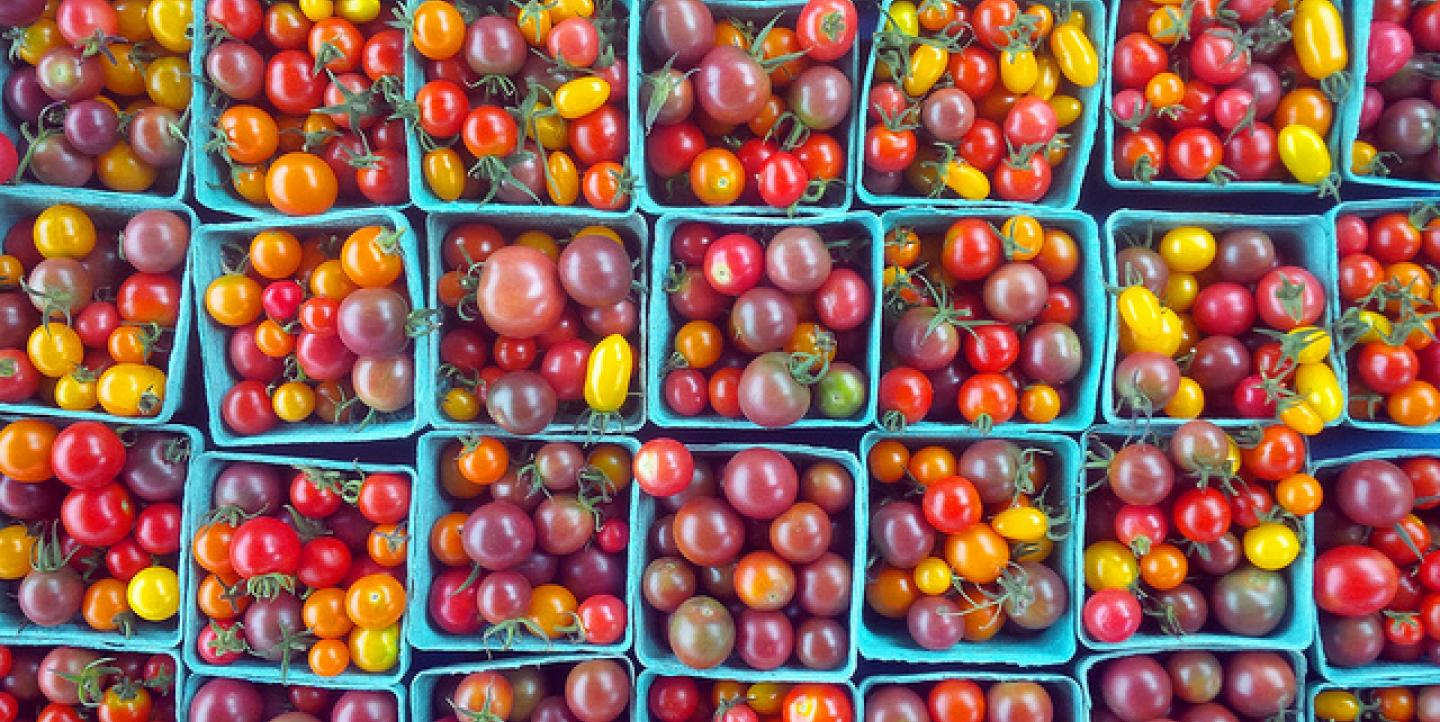Moving far past blog recipes and restaurant reviews, food journalists have a huge umbrella of issues to tackle - food policy, sustainable agriculture and fair labor practices to name a few - and they have to do so without burdening their readers with clunky facts and scientific jargon.
But framing your story around a simple, relatable topic is a good place to start. "You have to start the story at the beginning...and meet the audience where they are," said NPR News' Allison Aubrey at this week's "Telling the Story of Food" panel. "The what and the when is easy - the why is the harder thing to convey."
Aubrey joined other panelists from the Food and Environment Reporting Network, Orion Magazine, Center for Food Safety and more at the inaugural Food Tank Summit, a two-day event bringing together top thinkers from the food and agriculture sectors.
“Once you’re using food as a lens you have easy access to all important issues of the day,” Aubrey said. For instance, what starts as a story about donuts turns into a larger tale of unsustainably harvested palm oil that's found in most donuts, and on the deforestation it's causing in certain parts of the world.
Panelists pointed out a specific formula for food stories: personal, community and macro. "How is the food system affecting me, and then you and me, and then you dial it out and talk about policy, trends and movements" happening on a larger scale, said Erik Hoffner, outreach coordinator for Orion magazine and photographer and writer by trade.
Food is a story--a story of economy, nutrition, equality, social justice and more, says @planet_forward's @franksesno. #FoodTank
— Annie E. Leverich (@AnnieEmberland) January 21, 2015Roger Thurow, former Wall Street Journal reporter and current fellow at the Chicago Council on Global Affairs, suggests following the mantra: "outrage and inspire." In his book, The Last Hunger Season, Thurow highlights the "outrage" by following four farmers in Kenya who are suffering from starvation, similar to many food providers in the country.
He then focuses on one character - the "inspiration" - whose third name is "wanjala," which means "hunger season." His mother likely named him this because he was born during the hungriest months of the farming cycle. The personal glimpse into farmer Francis Wanjala Mamati's life moves readers to act.
"You need curiosity, and caring," as a food journalist, Thurow said. He recognizes that traditionally reporters should keep their opinions out of the story, but "you have to invest your feelings in it to find the outrage," he said.
To Sam Fromartz, editor-in-chief of the Food and Environment Reporting Network (FERN), "it's all about the packaging." Fromartz said there's a danger to segmenting your story topics into silos. "It's all about how it's interconnected." Anytime you can overlap as many of those issues - whether environmental, human interest or social - as you can without losing the focus of the narrative, it will make a stronger story, he said.
But finding that key interview to frame your story around isn't easy. "It takes a lot of work to find the right story that makes the point you want to make," Fromartz said. "It’s really tough for writers who are starting out because 90 percent of interviews get left on the cutting floor, and then you find the one interview or character that really helps, but it’s a lot of work."
Wanting to pitch a food story of your own? Make sure your angle is specific enough. “Often we get pitches that are topics...and my first response is 'What’s the story?' and that weeds out about 90% of the [pitches]," Fromartz said. FERN works with freelancers to get their stories produced and aired on larger media organizations' publications or channels.
And for a beat so strongly driven by compelling characters, multimedia is essential for telling the whole story. Adding visual or audio components can enrich your story, hearing the cadence of a farmer's voice, seeing first-hand the living conditions on large-scale farming operations or seeing stats displayed on an infographic. "Through the images you can continue to tell the stories and it reaches people who won’t sit and read a blog post," Hoffner said. Other ways to incorporate multimedia include:
A sound bite is a story that unfurls in everyone's mind. Everyone remembers it.-@vicki_robin on why #twitter can work for stories #FoodTank
— Planet Forward (@planet_forward) January 21, 2015Using @storehousehq platform for telling farm food stories https://t.co/eMD3zgzGEw @Food_Tank #foodtank #foodies
— Bruce Weaver (@BraveNewEarth) January 21, 2015
Ultimately, the food beat touches heavily on transparency, especially when the marketing departments of large food companies are used to controlling the conversation, Fromartz said. This is how stories like slave labor on tomato farms or farmers working for fair wages come out to the public.
We have a really simple job: find stories, and put them out in the world. That's a public good. -@Fromartz of @FERNews #FoodTank
— Planet Forward (@planet_forward) January 21, 2015Image CC-licensed on Flickr via Evan Leeson

